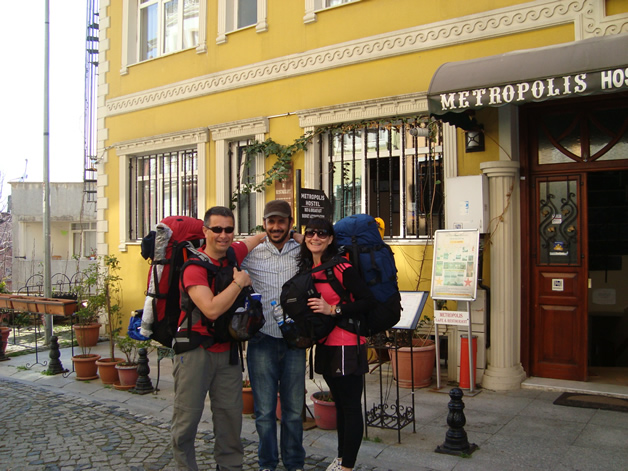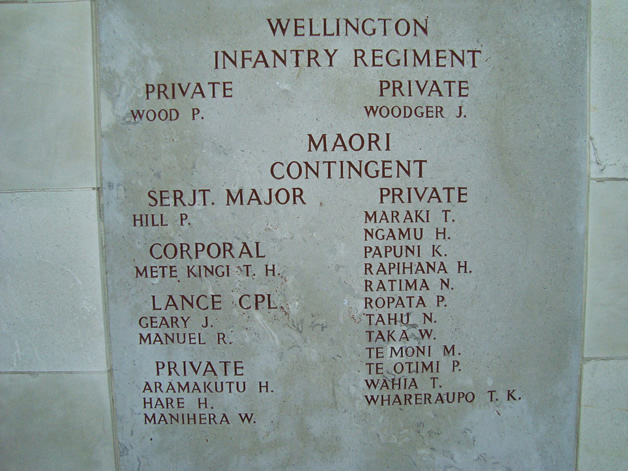Kiwis who journey to Turkey will leave better for it. How can they not? It features classical cities from ancient Roman civilization, natural travertine shelves and warm water to soak in (similar to New Zealand’s famous pink and white terraces of yesteryear), yachts that cruise the turquoise Mediterranean, fairy-like homes beneath honeycomb cliffs and the wonders of an Istanbul bazaar, scented with aromatic raw spices.
However, a significant piece of history – the 1915 Anzac Campaign, attracts our people to stand on the Gallipoli Peninsula to pay tribute to the fallen. My wife, Claire and I too, were drawn and decided to travel there to experience the commemorative services of ANZAC Day 2011. We didn’t take the usual five-hour bus ride to get there. We walked the 360 kilometres from Istanbul to Gallipoli.
On 29 March 2011, with our worldly possessions stuffed into back packs, (I was carrying 19 kilos on the back and another five kilos on the front), we pointed our noses in the right direction and took our first steps out of Istanbul. We arrived at our first destination, Avcilar City and set about finding accommodation – a tough task after our long walk; but we eventually found our abode by accident, after taking a back street by mistake.
On day three, after walking 30-plus kilometres that day alone, we had aching thigh muscles and the dreaded foot blisters. It took two days of rest in Silivri for the pain to abate, before we set off again. But that allowed time to reshuffle the contents of the back packs and discard weight. We had learned quickly, to carry less and buy local when the need arose.
By now we had hung a left off the main route to Gallipoli and had walked through ‘raw’ Turkey, following the coast line. We passed through villages where it seemed like life was at a standstill. Men seemed to sit around all day puffing a cigarette and supping Turkish coffee. Conversations stopped and heads turned when they saw us – as if they had seen ghosts. Being a Muslim country, we had decided Claire should dress more conservatively.
We passed many wonderful scenes – olive trees and grape vines ‘lost’ in the Sea of Marmara backdrop; apple trees with pink blossom in abundance; goats being herded among chestnut trees; fields of poppies and old World War Two concrete bunkers sitting in pasture.
We lived on tomatoes, cucumber, goat’s cheese, boiled eggs and luncheon for the 21 days it took us to cover the 360 kilometres.
Reaching the village of Eceabat signalled the end of our walking. We arrived on my birthday. It provided us ample time to rest up, reflect and visit the places of interest that brought home the significance of Gallipoli campaign for both the ANZACS and the Turks. Being Kiwis, we were embraced by the locals as fellow countrymen.
Anzac Day 2011 saw us welcome in the dawn at North Beach, where Anzac troops came ashore 96 years earlier. The New Zealand Memorial Service was continued eight kilometres further up, on the Chunuk Bair summit. It was the place where fighting New Zealanders sustained great losses but reached the top, to gaze upon the Dardanelles. When a determined Turkish counter-attack tried to regain the summit, it was the beginning of the end for the Mediterranean Expeditionary Forces.
It was an intimate time for us – being there with Turks – and in the true spirit of Anzac, we made some new friendships. What made this journey even more special for me was that my pōua, Shad Ruru from Koukourārata, was a Māori ANZAC soldierwho fought at and survived Gallipoli. Walking from Istanbul to Gallipoli by foot was the least we could do for someone we never want to forget. We are certainly better for the experience. Below is a poem I wrote for pōua Shad.
Dear Pōua Shad
Although we never met, I know who you are,
My grandfather who went to Gallipoli, a land of distance far.
We came to see for ourselves, where you spent some fighting time,
To expose ourselves to history, and imagined how you shined.
The walk was hard and challenging but we made it all the same,
It was the least one could do, to honour the family name.
Anzacs are spoke of highly, so we commemorate and remember you,
From all the Ruru whānau, as they stand proud too.
Anzac Day 2011, Gallipoli, Turkey.
Nā Brent Ruru
Footnote: Brent Ruru is the grandson of Shaderick Te Muru Ruru from Koukourārata (Port Levy). Married to Claire, they have travelled globally for five years. Brent is a professional speaker (www.brentruru.com) and can be contacted or booked to speak at [email protected] or 027 511 0249.

Brent (left) with his wife, Claire Ruru and the hostel owner.

Māori soldiers who lost their lives at Chunuk Bair.